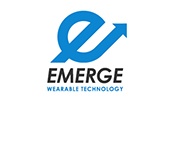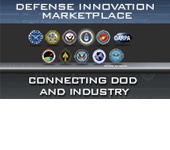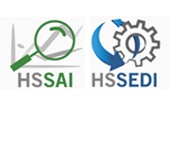Interoperability and Compatibility
During an emergency—whether it’s an active shooter situation, car crash or hurricane—different types of professionals, including law enforcement, fire and emergency medical services, all converge on the scene and need to coordinate their efforts. Their equipment, such as radios and wireless devices, needs to be compatible. Several projects within the S&T First Responders Group (FRG) focus on ways to ensure first responder technologies can connect. The goal is to enable the men and women working to save lives to simply push a button to communicate.
Emergency Data Exchange Language (EDXL) Data Standards
All too often, first responders have difficulty sharing critical data such as requests for equipment and personnel because there is no universal standard applied to data management. Different agencies use different tools to store and distribute data (i.e., different software creates files in different formats), and often these tools are incompatible. This can lead to a breakdown in the ability to share critical information at critical times.
To meet this challenge, FRG and first responders develop high-level information sharing requirements that are submitted to the Organization for the Advancement of Structured Information Standards (OASIS), a standards development organization. OASIS, in turn, develops a suite of emergency messaging standards. This suite of standards, known as EDXL, define common ways to format data so the different systems used by first responders are interoperable, thereby helping to ensure critical information can be easily shared.
Modeling and Analysis for Public Safety Broadband
In 2012, Congress passed groundbreaking legislation for a new nationwide public safety broadband network. The legislation provided funding to establish the First Responder Network Authority (FirstNet). FirstNet needs tools to answer questions about network coverage and capacity to reduce the cost and risk of deployments. FRG’s research provides FirstNet with insight needed to make more informed procurement-related decisions (e.g., for network infrastructure) by providing analysis on items such as the number and placement of cellular towers.
This project leverages commercially available, off-the-shelf network planning and simulation tools and identifies and develops additional models and measurement tools as needed that could be used to answer questions about network coverage and capacity for the nationwide public safety broadband network.
Project 25 Compliance Assessment Program (P25 CAP)
Communications equipment manufacturers often use different technical approaches that have the potential to leave their products incompatible. P25 CAP provides first responders with summary test reports and declaration of compliance documentation from suppliers. This information ensures equipment complies with P25 standards and ultimately reduces waste and poor investments in untested equipment.
P25 CAP is a compliance assessment program that tests communications equipment that claims to be compliant with P25 standards to ensure the equipment can work together, regardless of the manufacturer.
Public Safety Broadband Requirements
Public safety lacks a voice in the broadband standards development process. By ensuring the collection of strong requirements to inform the development of standards, public safety is helping to ensure equipment that meets the needs of first responders will be available in the marketplace.
This project gathers public safety’s most pressing requirements for broadband technologies in support of the nationwide public safety broadband network.
Video Quality in Public Safety (VQiPS)
As video technology has evolved, equipment options have become increasingly complex. Many first response agencies lack the tools and subject matter expertise needed to make informed video system purchasing decisions, so they often turn to manufacturers to direct them in their purchasing decisions. VQiPS helps first responders seek out solutions and collaborate on video quality challenges. Additionally, this project provides a set of tools for implementing video projects in public safety.
VQiPS develops assessment tools and guidance documents that enable first responder agencies to purchase and deploy appropriate video technology to meet their operational needs.
Multi-Access Extension for Smartphones (MaXphone)
Commercial cellular broadband networks (e.g., 4G LTE, 3G) will likely remain the dominant option to support first responder broadband applications for the immediate future; however, these networks do not provide first responders with mission-critical voice capabilities (i.e., radio-to-radio or one-to-many communications) that are available on land mobile radio (LMR) networks. MaXphone provides end users with the ability to take advantage of broadband capabilities while still being able to use LMR infrastructure for mission-critical voice.
Hybrid Public Safety Microphone “Turtle Mike”
While many first responders frequently augment their LMR communications with their smartphones, these commercial broadband devices lack the mission-critical voice capabilities (i.e., radio-to-radio or one-to-many communications) to serve as a viable alternative to LMR networks. The Turtle Mike allows first responders to continue to use legacy systems and devices for mission-critical voice communications while enhancing capacity, capability, redundancy and resiliency by leveraging broadband solutions.
Turtle Mike is a hybrid device that integrates commercial broadband data and legacy voice networks (e.g., LMR), thereby enhancing first responder communication devices.
Radio Internet Protocol Communications Module (RIC-M)
Often, first responders face challenges with communicating across jurisdictions during joint operations or major crises because of incompatible communications systems. Proprietary differences make it difficult for equipment by different manufacturers to communicate effectively. Replacing legacy base station equipment with newer models can be quite costly. As an alternative, FRG designed a P25-compatible, after-market technology solution—RIC-M—that allows agencies to easily upgrade and reconfigure legacy systems for less than $500. RIC-M allows many older base station systems to be used for another 10 to 20 years.
 Official website of the Department of Homeland Security
Official website of the Department of Homeland Security
















